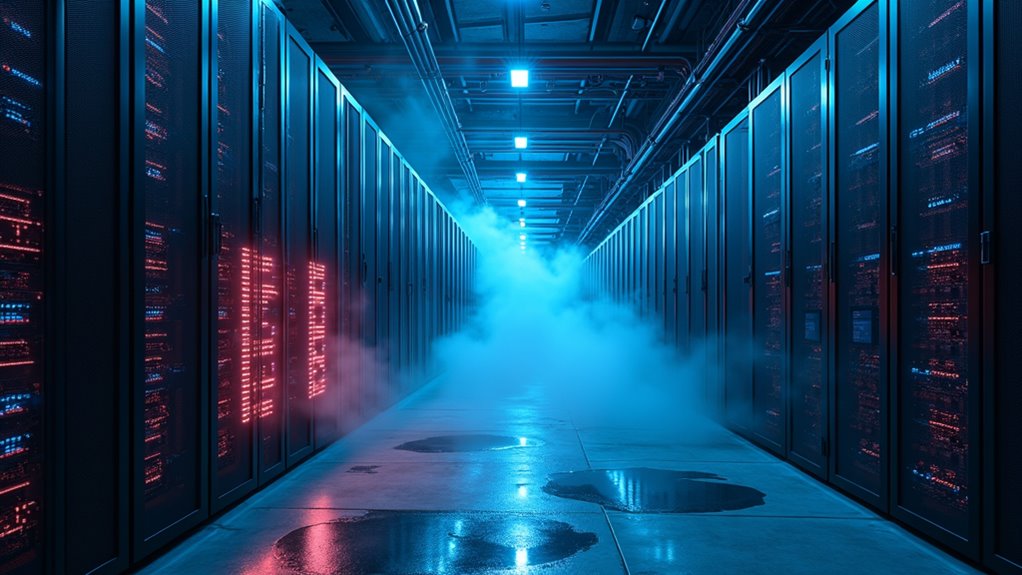Training AI models exacts a brutal environmental toll. A single model churns through enough electricity to power five cars for their entire lifetime, while guzzling up to 700,000 liters of water just for cooling. The carbon footprint? A whopping 626,000 pounds of CO2 per model. Tech companies love to brag about their fancy AI capabilities, but they’re oddly quiet about this dirty little secret. The full environmental impact goes way beyond these shocking numbers.
While tech companies tout their latest AI models as groundbreaking innovations, the environmental toll is staggering. Training a single AI model spews out 626,000 pounds of carbon dioxide – the same as five cars driven for their entire lifetime. Let that sink in. These models aren’t just number-crunching machines; they’re environmental heavyweights that gulp down electricity like there’s no tomorrow. Renewable energy sources could significantly reduce these emissions, offering a cleaner path forward. To make matters worse, the frequent introduction of newer model versions like GPT-3.5 and GPT-4 multiplies this environmental burden.
AI isn’t just revolutionizing tech – it’s devouring energy at an alarming rate, leaving a massive carbon footprint in its wake.
The water consumption is equally mind-boggling. GPT-3, that chatty AI everyone’s obsessed with, slurped up 700,000 liters of water just for cooling during training. That’s right – AI models need constant cooling, just like overheated teenagers at a summer dance. Data centers are basically giant water-guzzling machines, and they’re not picky about using precious freshwater resources.
The hardware situation isn’t any prettier. These AI behemoths run on specialized materials and rare earth metals – stuff that often comes with its own environmental baggage. Mining these materials? Not exactly a walk in the park for Mother Earth. And when the hardware becomes obsolete? Well, that’s another environmental headache waiting to happen.
From birth to death, AI models leave their mark on the planet. The lifecycle includes data collection, training, deployment, and eventually, disposal. Each stage burns through energy like a hot rod at a drag race.
And here’s the kicker – each new generation of AI models gets bigger and hungrier than the last.
Some solutions exist, sure. Pre-trained models can reduce energy needs. Quantum computing might help. Efficient algorithms could trim the fat. But let’s face it – at the current rate, the ICT sector, including AI, is barreling toward 14% of global emissions by 2040. That’s not exactly progress in the fight against climate change.
The tech industry loves to brag about AI’s capabilities, but they’re oddly quiet about its environmental impact. Maybe it’s time to look at the true cost of these digital brains – before we train ourselves into an environmental corner.









